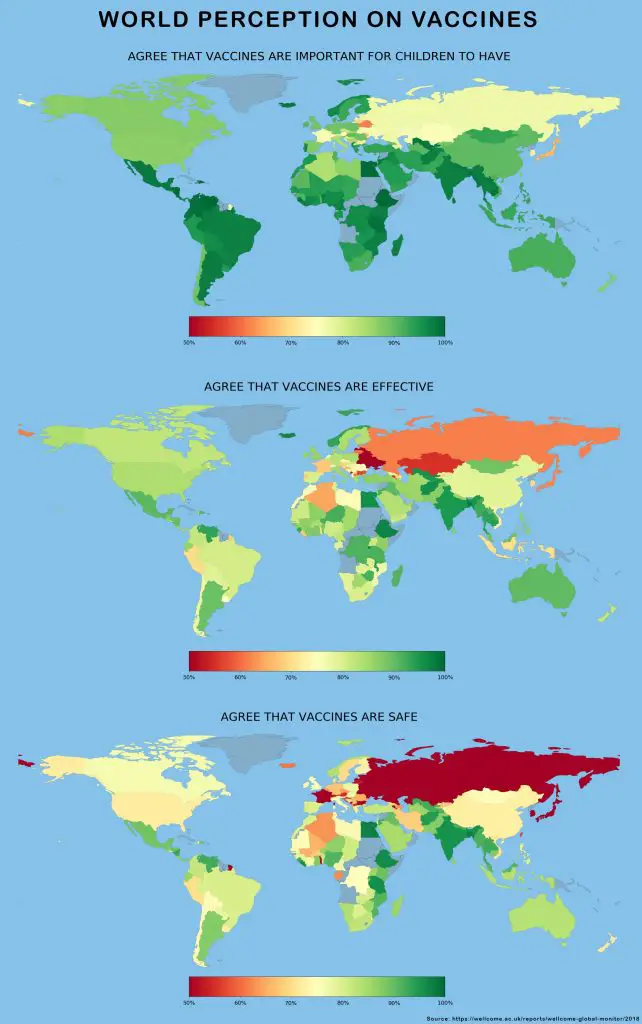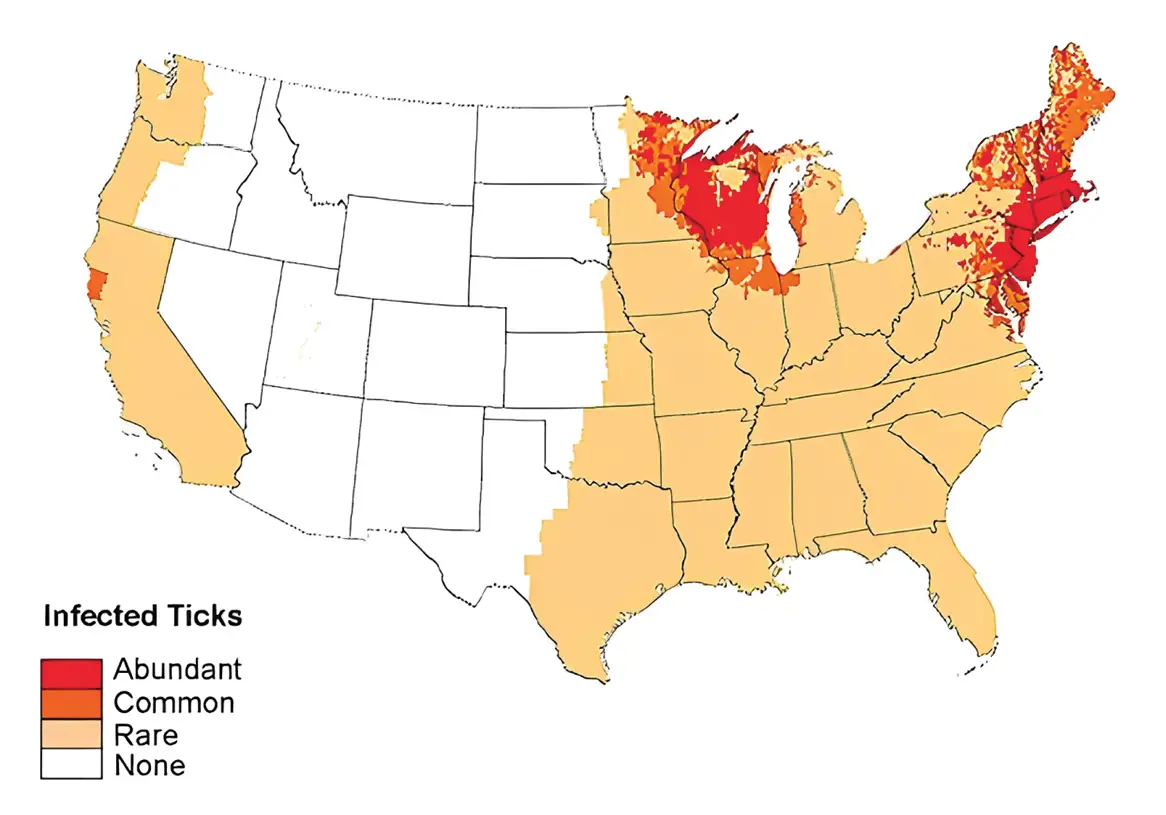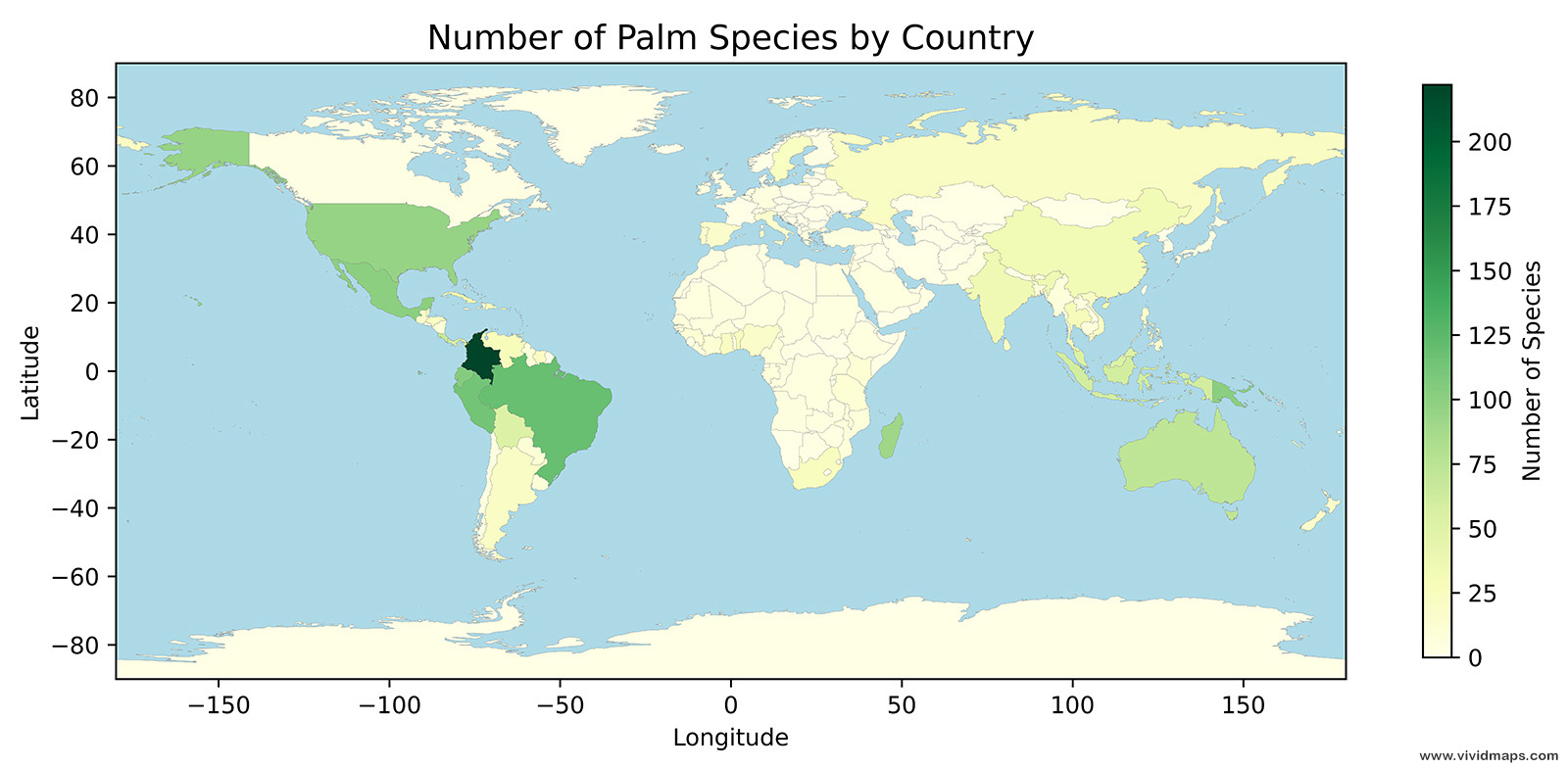World Perception of Vaccines
Decision-making concerning vaccination has been and is still most often driven by fear: fear of disease when sensed as rampant or dangerous, but also fear of vaccine-associated adverse events, mainly when the disease is less or no longer “visible.”
The most skeptical people live in places where infectious diseases are rare. In tropical countries, there are more supporters of vaccinations.

According to Global Monitor, in 2019, just half of the people in eastern Europe thought vaccines were safe, compared with 79% worldwide. Only 59% of people in western Europe agree that vaccines are safe, while 95% of people in south Asia agree. Venezuela and India are also big supporters because many tropical diseases are endemic there.
“Vaccines are safe”:
South Asia – 94%
Central America and Mexico – 90%
East Africa – 90%
Australia and New Zealand – 89%
Middle East – 86%
North Africa – 84%
Central Africa – 84%
North Europe – 84%
Western Africa – 83%
North America – 83%
South America – 82%
South East Asia – 81%
South Africa – 80%
South Europe – 80%
Central Asia – 79%
East Asia – 77%
Western Europe – 77%
Eastern Europe 65%
World – 84%
During the COVID-19 pandemic, attitudes toward vaccination changed dramatically.
Before the coronavirus pandemic vaccine rollout, doubts, fears, and rumors about the effectiveness and safety of the vaccine lead to hesitation among many people.
For ongoing vaccination campaigns to improve coverage in the future, substantial challenges remain to be overcome. These include expanding vaccination among those reporting lower vaccine confidence besides broadening vaccine access in low- and middle-income nations.








